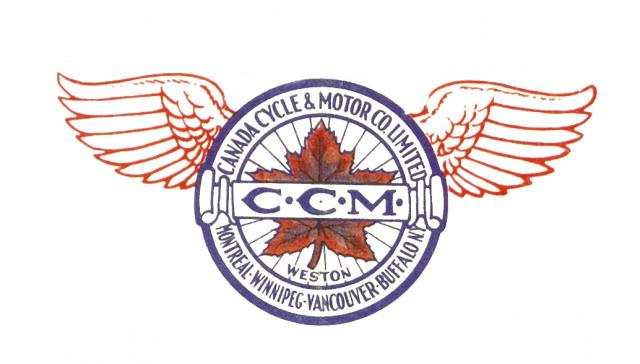Canada Cycle & Motor: The CCM Story

THINK CANADIAN HISTORY IS DULL? THINK AGAIN.
Think of Walter Massey. By the end of the 19th century, his family’s manufacturing concern was the largest of its kind in the British Empire. When he heard Hartford's huge American Bicycle Co. was headed to Canada, he helped buy Canada’s four largest bicycle makers and merge them with his own to form CCM. Not only did CCM beat back the American intruders, it bought them out.
Think of Louis Schwitzer. A graduate of the Imperial Artillery Academy in Vienna, Austria, Schwitzer designed CCM’s popular Russell motor car. Following his time at CCM, Schwitzer gained fame when he won the first race staged at the Indianapolis Motor Speedway on August 19, 1909. He went on to design the “Marmon Yellow Jacket” engine which powered the winning car in the first Indy 500.
Think of Willie Spencer. During the 20s Spencer on a CCM Flyer was one of the world’s top bicycle racers. When Spencer couldn’t come to terms with John Chapman, America’s “Czar of Racing,” he established his own circuit of racers. Dubbed “Willie’s Outlaws” by the American press, Willie’s riders challenged Chapman’s to a grudge match. When Willie’s crew won the race, as well as a rematch at Madison Square Garden, Willie was given a substantial financial settlement and asked to return to Canada.
Think of Torchy Peden. During the thirties Peden was the dominant racer on the six-day bicycle racing circuit. So popular was the red-headed giant that he became one of the world’s highest-paid athletes, earning even more than Babe Ruth and Lou Gehrig of the New York Yankees. CCM eventually presented Torchy with a gold-plated version of his CCM Flyer.
Think of Bill Shaw. Shaw was the CCM engineer who developed the plastic tip for the back of the skate blade. Designed to reduce injury, the innovation was introduced by Red Kelly of the Toronto Maple Leafs in the 59/60 season. Shaw would go on to help develop the IMAX projection system. His original projector would find a home at Ontario Place in 1971 and Shaw would receive several awards for his work including an Oscar for scientific and engineering achievement in 1986.
Think of Bobby Hull. During the sixties, the “Golden Jet” was hockey’s marquee player. Although Hull endorsed Bauer skates he wore CCM skates. In 1968 Hull made it official when he signed a five-year endorsement deal with CCM. One of the most lucrative contracts in all of sports at the time, it landed Hull on the cover of Time magazine and CCM president Tom Nease in a lot of hot water.
Think of the Mafia. Yes, the Mafia. In the sixties and seventies when a fierce boardroom battle was waged for control of CCM, the combatants in the struggle looked for back-up in the most unlikely of places.
Think Canadian history is dull? You’ll be surprised.




